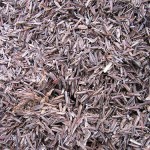May21
Low-Cost Testing Tools Enable Innovation of Personalization
Point: Lower-cost testing and diagnostic tools mean new opportunities for the innovation of personalization. 
Story: The declining cost of genetic assays provides a new basis for innovative products and services in medicine. The company 23andMe exemplifies this trend. The company provides a fascinating personalized service. Here’s how it works: a customer submits a saliva sample to the company, and the company analyzes the person’s DNA. In particular, 23andMe identifies common genetic variations and provides the customer with a list of the genetic variations he or she has. Further, 23andMe explains the likely implications of those variations. For example, one variation might indicate a person’s increased chance of getting a disease, like diabetes. Other variations might give clues to the person’s sensitivity to various drugs.
For the individual, 23andMe provides reports as well as forums where people can converse with others who share similar genetic patterns.
But 23andMe doesn’t just providing an innovative service — the company uses the data it gets from customers as a foundation for future innovation. Here’s how: 23andMe aggregates each individual’s data to enable analysis of broader patterns. In particular, this aggregation can lead to new lines of research that support personalized medicine.
Personalized medicine could change which drugs people take, and it could affect which drugs make it to the market. Today, pharmaceuticals that are beneficial to a subset of the population aren’t approved for use or are pulled from the market because of increased risk of adverse reactions in a different subset of the population. If genetic testing can identify which consumers would respond well to a drug and which might react poorly to a drug, then more drugs can stay on the market, available to those who would not have adverse reactions to using them.
More broadly, the story illustrates how a new dimension of low-cost testing or diagnostic technology can create a new ecosystem for innovative services and products. Lowering the cost of data on the customer improves the fit of products to customers. This increases satisfaction, reduces product returns, and enables higher profits on smaller niche customer populations. Thus, the data enables incremental innovation of new variant products and as well as more radical innovation such as 23andMe.
Action:
- Look for new low-cost technologies that enable the collection of new data on customers or enable customers to know more about their individuals needs.
- Consider how to leverage that deeper personalization data through personalized products, better segmentation of services, or affinity groups for open innovation
- Reconsider failed innovations or products — would the prior flop succeed if a low-cost test could identify the right customers for that product?
For more information: Linda Avey, co-founder of23andMe presented at the World Innovation Forum May 5-6, 2009











